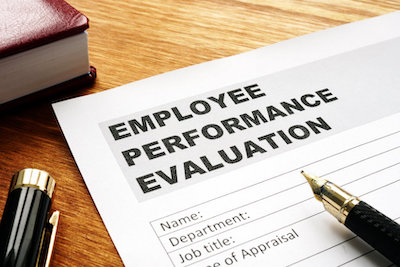 I recently received the following question about performance reviews from a human resources professional at an organization that is adopting agile development practices.
I recently received the following question about performance reviews from a human resources professional at an organization that is adopting agile development practices.
Question:
My organization is just starting to use Agile and the question regarding performance management and specifically how performance reviews were now going to be done for the employees came up. Everyone turned to the HR team for the answer so I’m doing some research on this.
It appears in the agile world, some coaches and practitioners will say “there should be no such thing as performance management” but I’m hoping people recognize this is a reality in the corporate world and needs to be addressed. Currently our performance management system is based on an annual cycle and individual performance reviews/assessments are completed by the managers for their direct reports.
Can you share with me how organizations are addressing performance management and specifically performance reviews/assessments for individual employees that are on agile teams?
Answer:
This is a huge topic, worthy of at least a book, probably several. I’ll try to give some useful starting points based on my experience. I’ll start by saying there is strong evidence that doing away with performance appraisals entirely might actually improve performance. Since you have said the company isn’t ready to consider that option, I will focus on what to do within a traditional appraisal system when the company adopts agile practices.
As a starting point, nothing need change. People still have managers who are responsible for their performance reviews, same as it was pre-agile. I work with many companies getting great benefit from adopting agile practices for years, without changing anything about the way performance appraisals are done.
As for possible improvements on the system, let’s assume for the rest of this piece that the organization in question is using a team-based agile methodology like scrum.
The simplest improvement is to use a 360 degree style appraisal, where the manager solicits feedback from an employee’s teammates, product owner, and almost anyone else who works regularly with the individual. The one person I’d recommend leaving out of a scrum team member’s 360 review process is the scrum master. The scrum master role is designed to carry no position power, and even having input on a performance review might jeopardize the special relationship that scrum masters have with the members of the team.
Now let’s examine a slightly more progressive approach: team-level performance appraisal. Remember, scrum is a team-based approach to work. It allows management to treat the team as the working unit, as opposed to the individual. Teams make and keep commitments to the business. Teams deliver value. Thus, if we are going to measure performance, it is best done at a team level.
One of our large clients is doing a mixed approach to performance rating, where each team receives a performance score. The scores are based on a set of agreed upon metrics, including customer satisfaction with the team’s deliverables. Each individual’s performance score is a 50/50 mix of the team score combined with the manager’s score of the individual. This system allows managers to help employees develop professionally, while keeping people focused on maximizing the value delivered to the business by their team.
Further Reading
- Managing the Performance of Scrum Team Members
- Navigating Performance Reviews
- Pay For Performance Hard To Get Right
- Performance Review Pain Relief – The Agile Way
- Individual Performance Appraisals, Just Say No!
Cheers,

Pingback: Cultural Differences and Performance Appraisals in Scrum | Aqqurite AB
Great blog. I just read an article in the Harvard Business Review called “The Feedback Fallacy” (March-April 2019 issue). I found it also very valuable and a good approach for doing performance reviews and feedback in general.